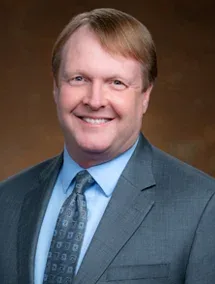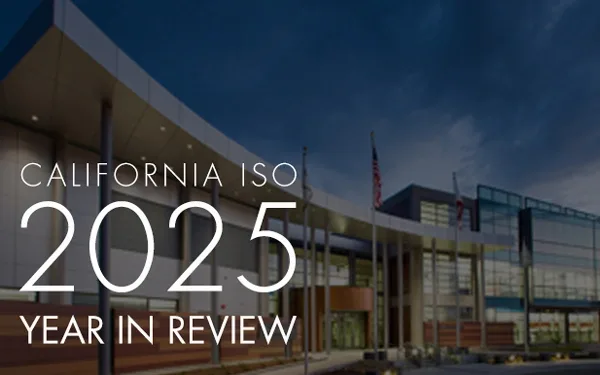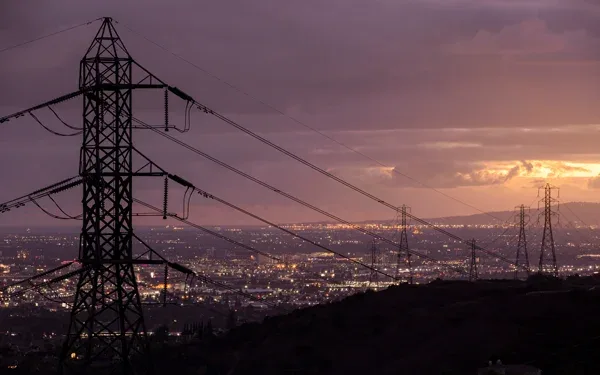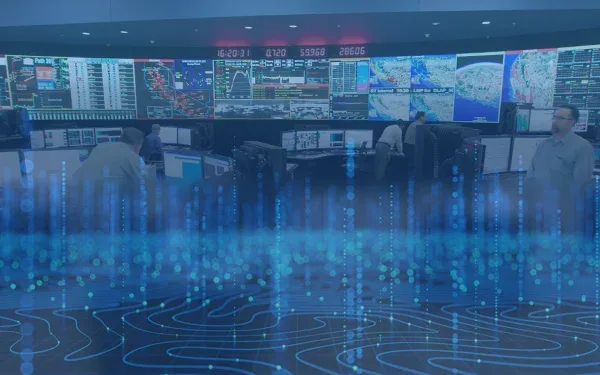ISO’s 2022 Stakeholder Symposium showcases the interconnected West

The ISO’s 2022 Stakeholder Symposium held November 9-10 in downtown Sacramento got off to an inspired start with remarks from U.S. Energy Secretary Jennifer Granholm, who addressed us remotely and underscored the tremendous value and importance of the Western energy community working together to successfully negotiate the many challenges we face.
Calling the global movement to clean energy and the clean-energy economy “arguably the biggest transition in human history,” the secretary correctly said “the only way to make this transition to clean and affordable is to make sure it is a managed transition. That it is a thoughtful transition,” advanced through “coordination and intentional collaboration.”
This was my first Symposium since joining the ISO as CEO in 2020 and I was excited and appreciative of being able to help bring many of our friends from the Western energy community together again in Sacramento. We focused first and foremost on coordination and collaboration because some things are just too big and complicated to go it alone.
As I reflected in my remarks following Secretary Granholm, our industry and the challenges we face have changed dramatically during the four highly disruptive and turbulent years since we last met together in 2018, before the global pandemic forced us to put the biennial Symposium on hold until this year.
Back in 2018, many of the issues we are grappling with today such as climate change and the advent of large-scale battery storage felt more like abstract concepts than on-the-ground realities. Today, we have first-hand experience with West-wide heat domes and the impacts of severe wildfires on the bulk electric system. In just the past two years, California has installed more than 4,000 MW of lithium ion-batteries that have helped preserve reliability under very stressed grid conditions. We now have multiple viable proposals for inter-regional transmission lines, pending auctions for offshore-wind leases in California, and the emergence of the Western Resource Adequacy Program.
Through far-sighted state legislation and utility leadership throughout the region, we also have much greater energy policy alignment across the West than we did just four years ago. The changes in the dialogue around regional energy markets are pretty remarkable. In 2018, the Western Energy Imbalance Market or WEIM was into its fourth year of operations and expanding its footprint, but an extended day-ahead market was just a glimmer in the region’s eye. Today, we have almost 80% of the West participating in the WEIM with $3 billion in cumulative benefits, the ISO is now serving as the Reliability Coordinator for most of the West, and we are on the cusp of a final proposal for an extended day-ahead market we refer to by its acronym of EDAM.
In the meantime, legislators and regulators across the West are talking about the potential benefits of a Western Regional Transmission Organization, or RTO. Clearly, this is not your 2018 power system.
In early September, the extreme heat wave that hit California and other parts of the West brought into full Technicolor the many realities now facing our region, from extreme temperatures and prolonged drought to the growing role for demand response and distributed energy resources in meeting ambitious clean-energy targets. The September heat wave also provided another tangible reminder of how interwoven and interconnected we are in the West and the benefits and imperative of working together across a broad geographical footprint to engineer a reliable, affordable and equitable clean-energy transition.

As I said in my remarks, I think the more than 800 people who attended our day-and-a-half Symposium all recognize what a dynamic, exciting and challenging moment this is for California and the broader West. It is a moment that is rich with opportunity. That’s why we wanted to bring together some of the most prominent voices in the Western energy community to share their views on the key issues that are shaping our energy future. The conversation was as stimulating and thought-provoking as I had hoped it would be.
We began the first session on Wednesday Nov. 9 with a conversation among a group of utility CEOs representing a large portion of the Western interconnection about the progress we have made on developing an extended day-ahead market, including perspectives on both market design and governance and what we have learned about the benefits of coordination through the WEIM. Martin Adams, General Manager, Los Angeles Department of Water & Power; Stefan Bird, President & CEO, Pacific Power; Lisa Grow, President & CEO, Idaho Power; Steve Powell, President & CEO, Southern California Edison; James Shetler, General Manager, Balancing Authority of Northern California; Debra Smith, General Manager & CEO, Seattle City Light, and; Caroline Winn, CEO, San Diego Gas & Electric were candid in identifying the benefits of our approach and about the areas they want to keep working with us to refine. That is exactly the kind of stakeholder engagement we value.
Next, we heard from ISO Board of Governors member Angelina Galiteva and the WEIM Governing Body Member John Prescott about their experience to date with the joint authority model of governance that now applies to the WEIM. They discussed how it has helped build trust and more inclusive decision-making in the context of the WEIM and laid the groundwork for the next phase of governance evolution for EDAM.
The microphone was then handed to Rebecca Wagner, who graciously stepped in to lead the WEIM Governance Review Committee in the wake of the tragic passing of our dear friend and colleague, Therese Hampton. After taking a moment to recognize Therese, Rebecca moderated a discussion with several of the key regulators in the West who have been very personally engaged in the dialogue around Western markets and governance. Darcie Houck, Commissioner, California Public Utilities Commission; Thad LeVar, Commission Chair, Public Service Commission of Utah; Ann Rendahl, Commissioner, Washington Utilities & Transportation Commission, and; Letha Tawney, Commissioner, Oregon Public Utility Commission each shared their perspectives on the key success factors in building on WEIM and further strengthening Western collaboration.
Transmission and the need to build more of it quickly and cost-effectively is on everyone’s mind in Western energy circles. Rob Gramlich of Grid Strategies, who has taken on national prominence as a driver of improved transmission planning, led a thoughtful conversation about the pressing need and emerging examples of real change and creativity in transmission planning and queue management with three of the region’s most engaged experts on the topic. This is one of the most important issues facing the ISO and we were excited to share some of the real progress underway. Neil Millar, our vice president for infrastructure and operations planning, shared his perspective about the challenges we face and how we can meet them. We also heard from Scott D. Bolton, Senior Vice President, Transmission & Market Development, PacifiCorp, and; Maury Galbraith, Executive Director, Western Interstate Energy Board.
I then facilitated a conversation with four other key leaders from around the region about the co-evolution of resource adequacy, transmission planning and market development initiatives across the west and how we can connect the different puzzle pieces as we work towards broader regional market integration. We were honored to hear from Governor Gavin Newsom’s Senior Advisor for Energy, Karen Douglas; Bonneville Power Administration Administrator John Hairston; Western Power Pool President and CEO, Sarah Edmonds, and; Jan Smutny-Jones, CEO of the Independent Power Producers Association.
We wrapped up the first day’s work with Stacey Crowley, California ISO’s Vice President of External Affairs, moderating a conversation with two of the West’s most engaged lawmakers, Senators Chris Hansen of Colorado and Chris Brooks of Nevada, on their roles and vision in shaping regional energy policy and markets. We also got to hear via video from California Assembly member and Appropriations Committee Chair Chris Holden, a longtime champion of greater regional coordination on Western energy issues.
After a wonderful reception that allowed us to more casually reconnect and engage with old friends and colleagues, we were back at it the next morning with my brief overview of the CAISO’s 2022-2026 strategic plan. We also heard from California ISO Senior Vice President and Chief Operating Officer Mark Rothleder on some of the key findings and lessons learned from the September heat wave, as well as some additional thoughts on strengthening reliability through regional coordination. Mark underscored how robust coordination with government, utility and other partners, as well as the public stepping up to conserve and the extra capacity that’s been added to the system over the past two years, helped us get through the most challenging conditions on the grid in memory without major disruptions in service.
After Mark, Joanne Serina, the ISO’s vice president for customer experience and stakeholder engagement, brought several of our key partners to the stage to discuss opportunities and challenges in engaging with the ISO as it evolves its energy market and broadens its products and services. Carrie Bentley, Co-Founder & CEO, Gridwell Consulting; Eric Eisenman, Director, FERC & ISO Relations, Pacific Gas & Electric Company; David Fuller, Director of Business Development & Origination, The Anschutz Corporation; and, Jim Shandalov, Vice President Origination, NextEra Energy Resources each brought their unique perspective to the conversation.
We wrapped things up with Alex Morris of the California Energy Storage Association leading a stimulating panel discussion about some of the technological breakthroughs on the path to a decarbonized grid. Alex and panelists David Hochschild, Chair, California Energy Commission; Anne Hoskins, Senior Vice President Policy & Market Development, Generac Energy Technology; Mateo Jaramillo, Co-Founder & CEO, Form Energy; and, Arne Olson, Senior Partner, Energy & Environmental Economics (E3) panel touched on the role dispatchable clean power, energy storage and distributed energy resources will play in meeting California and other states’ ambitious clean-energy targets. They discussed other types of innovation that may be necessary to get us there, such as long-duration storage and green hydrogen as they helped us to better understand the future of technology innovation and fill in some of the blank spots on the resource map.

The Symposium was a remarkable opportunity to reconnect with friends and colleagues and hear from some of the most prominent energy leaders in the West on the challenges we face, how best to meet them and what we need do to maintain reliability, affordability and equity in this profound transition to our clean energy future.
All of us at the Symposium are dealing with huge challenges exacerbated by climate change, drought, wildfires, rapidly changing technology and the evolving energy consuming habits of the public. But when I think how far we have come in technology innovation over the past 10 years, I am even more excited for what lies ahead over the next couple of decades. I think we can safely say it will not be your 2022 power system!
I am grateful to all of our panelists and for everyone who participated, deeply appreciative of our many generous sponsors and to our able and hard-working ISO team who organized a memorable and evocative Symposium.

We have much work ahead of us, but I came away from the Symposium with even more enthusiasm and optimism for the progress that lies ahead. I have been around Western energy for 25 years now, and this is the most dynamic and exciting time I have ever seen. We have the capacity to take major steps forward together to further integrate the West and help realize the energy future we need. I’m more confident than ever that we will keep working together to seize the day and make it happen.


